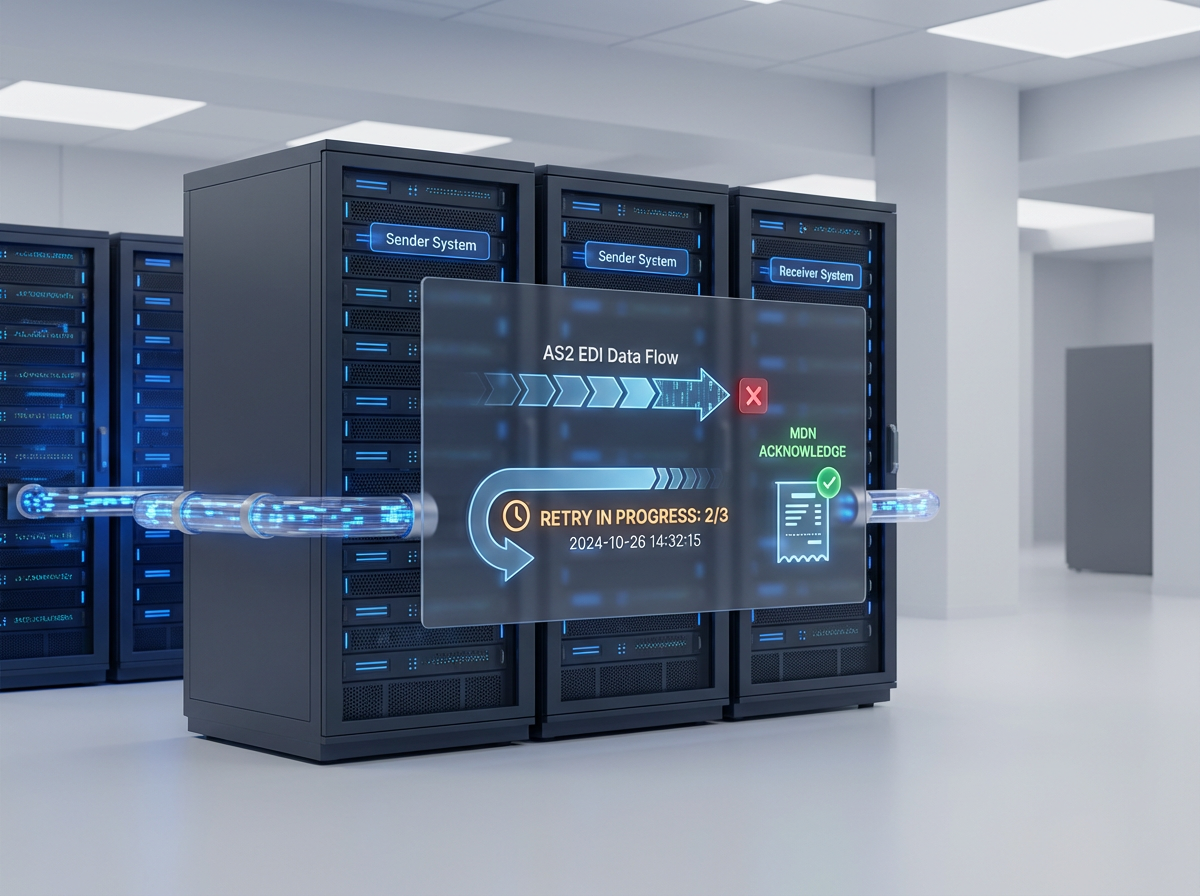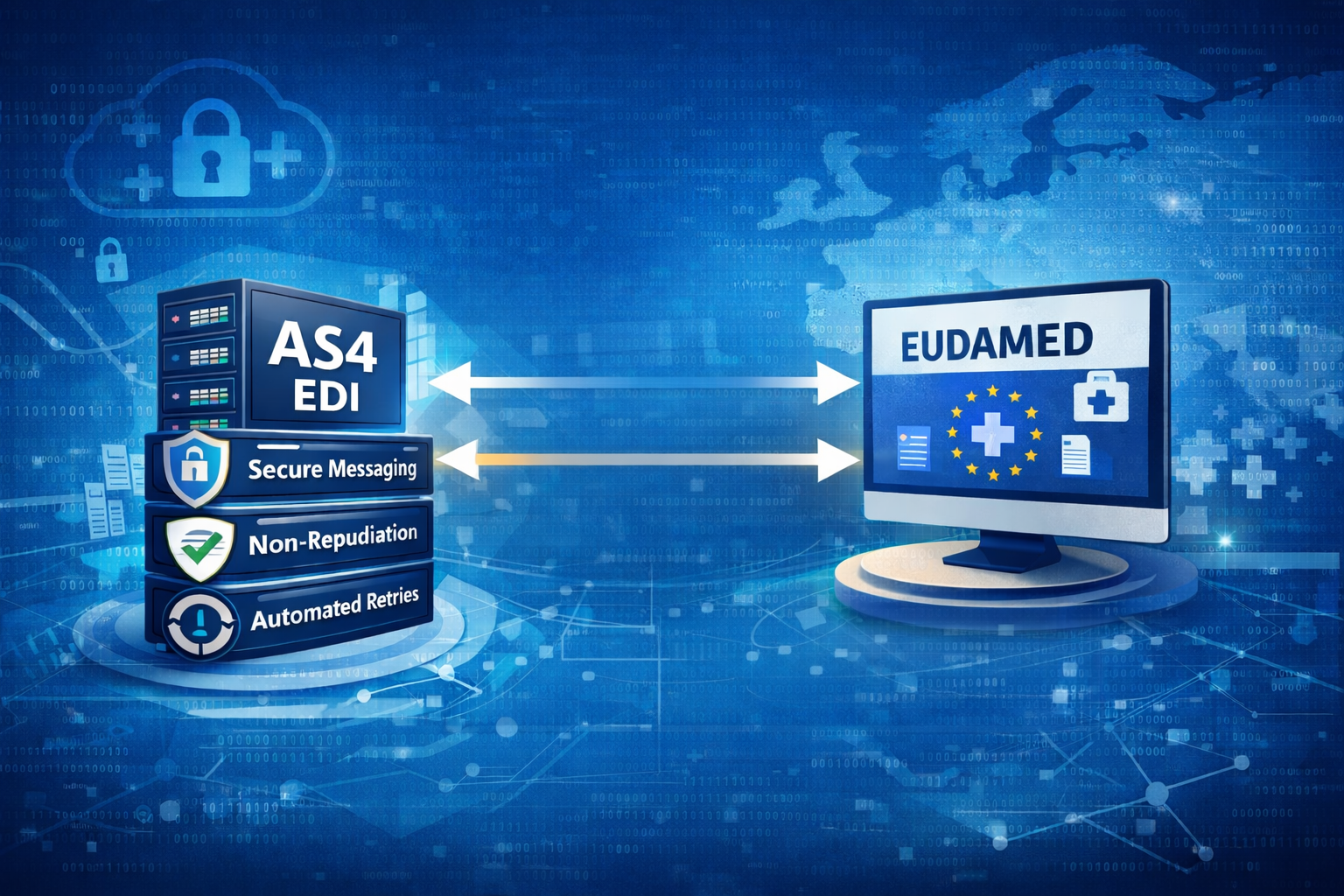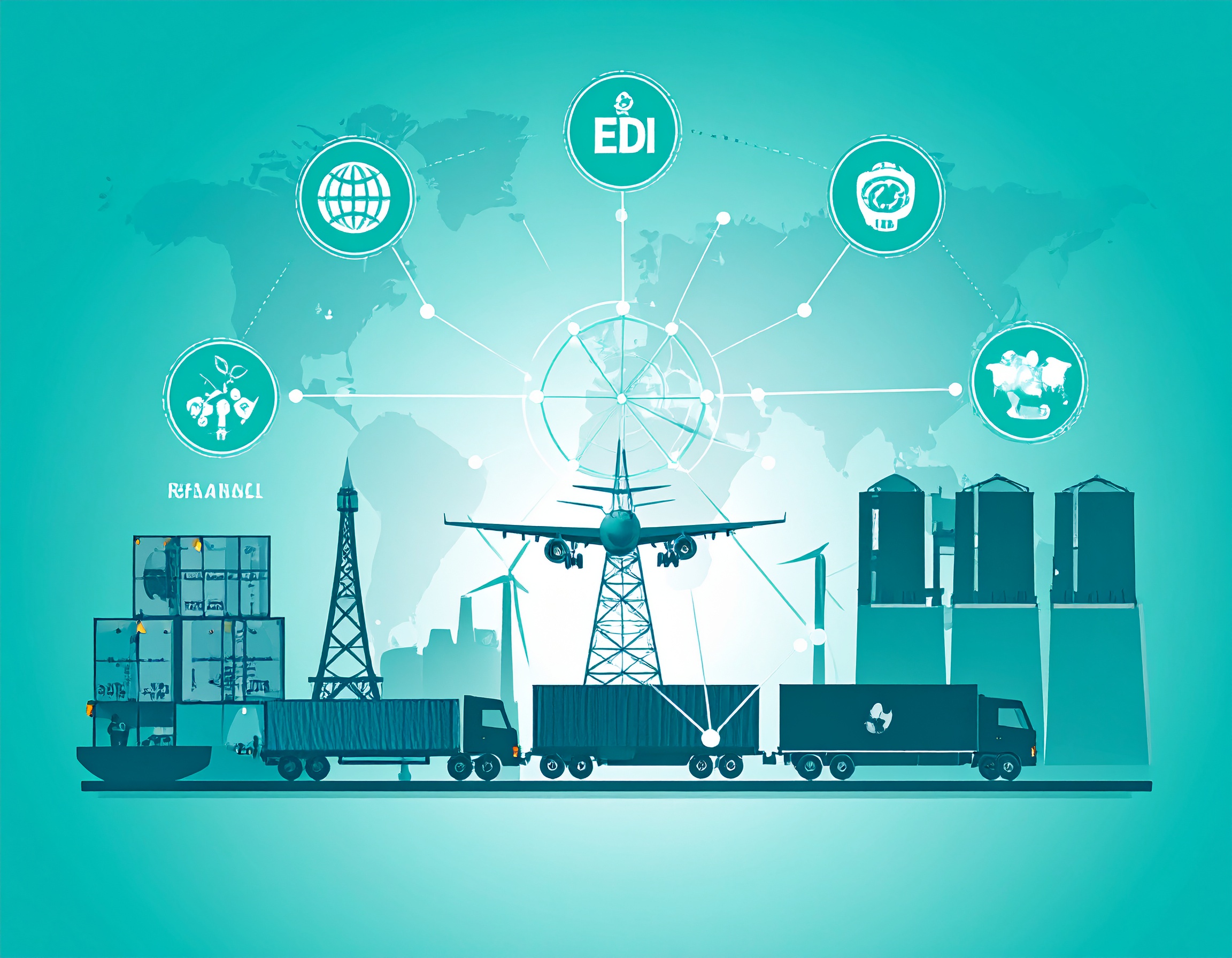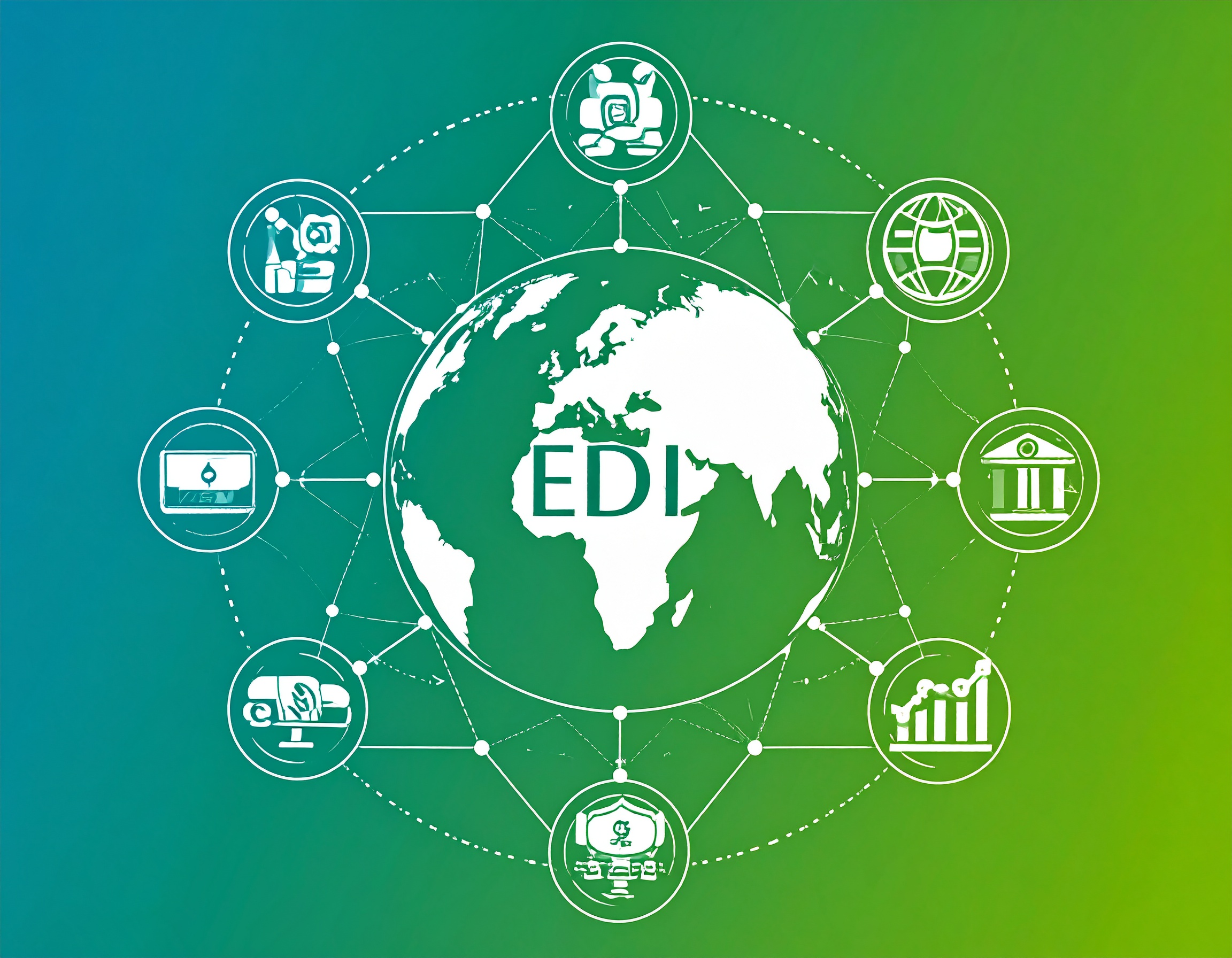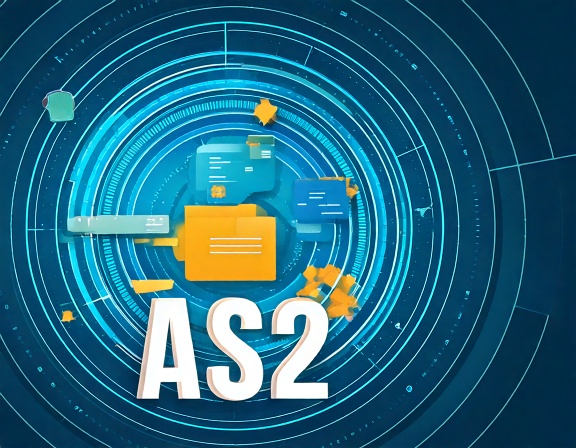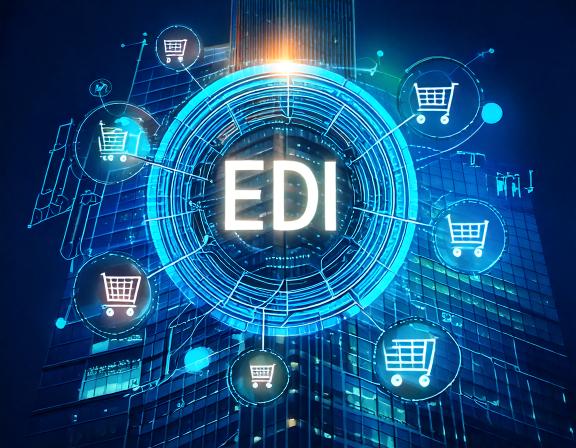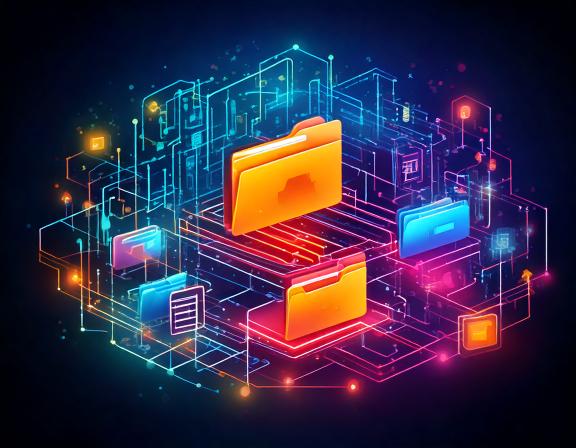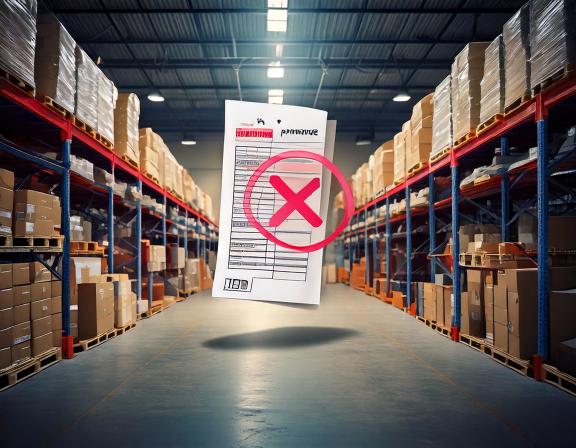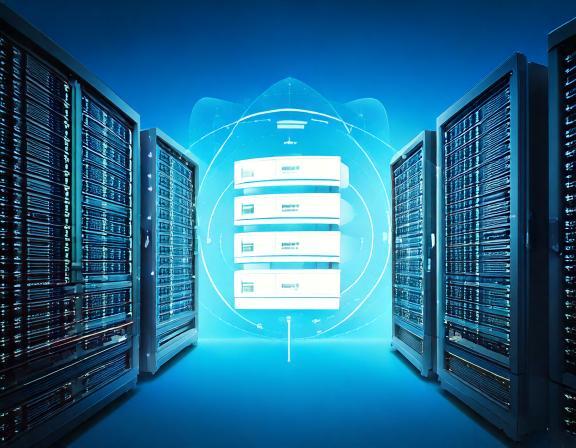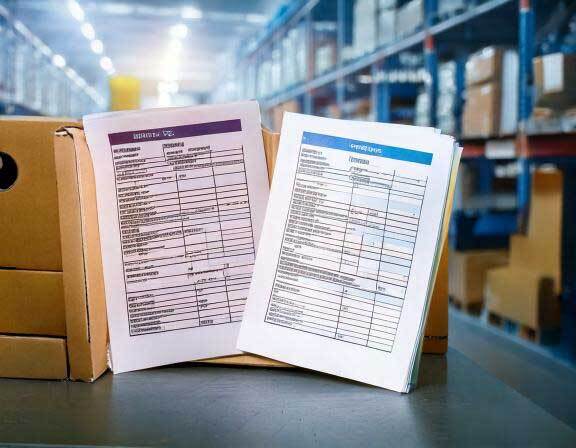MFT Gateway is a hosted Software as a Service (SaaS) solution that enables file exchange over the AS2 or SFTP protocol, without the need to install or maintain.
- Blog
- API-Driven EDI: Modernizing B2B Integration
EDI
API-Driven EDI: Modernizing B2B Integration
Discover how API-driven EDI modernizes B2B integration by enabling real-time data exchange between ERP systems and trading partners.

Udith Gunaratna
Published: 23 Jul 2025
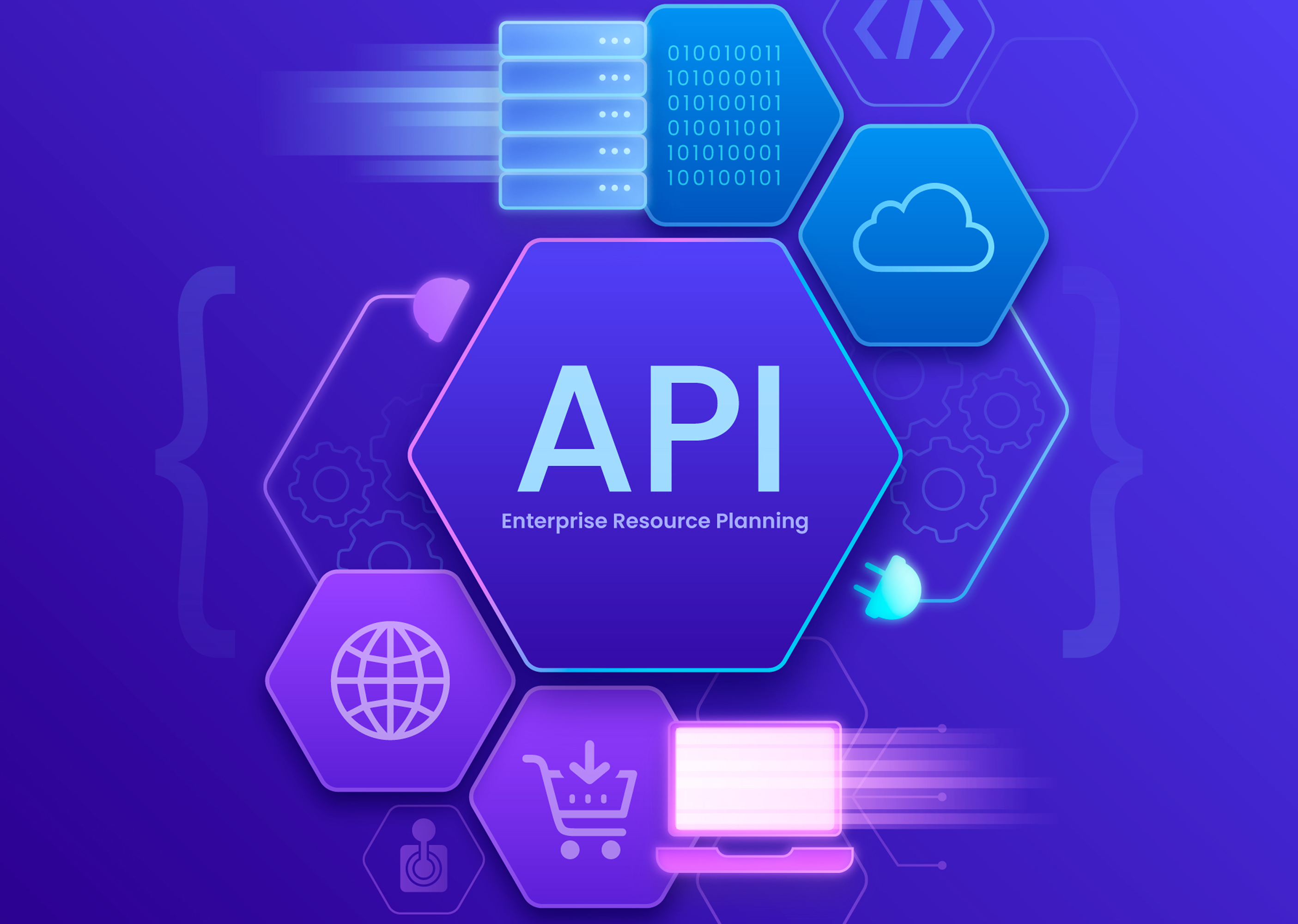
Table of Contents
What is EDI?
Electronic Data Interchange (EDI) is the digital exchange of standardized business documents between organizations. It replaces traditional, paper-based processes by allowing business systems to communicate directly with each other, automating transactions like purchase orders, invoices, shipping notices, and inventory updates.
By eliminating the need for manual data entry, EDI reduces errors, cuts down processing time, and increases overall efficiency. It’s a vital tool in today’s supply chain landscape, where speed, accuracy, and automation are critical.
EDI enables businesses to exchange data more quickly and reliably with their partners, strengthening collaboration and improving operational performance. In a fast-paced, globally connected marketplace, EDI helps organizations stay agile, competitive, and aligned with modern business demands.
What is an API?
An API (or Application Programming Interface) is a set of rules and protocols that allows different software applications to communicate with each other. It can be described as a messenger that enables two systems to exchange information in a structured, secure, and predictable way.
APIs are widely used to:
-
Connect cloud applications
-
Enable real-time data exchange
-
Automate workflows
-
Integrate third-party services into existing systems
Leveraging ERP APIs for EDI Automation
In the context of EDIs, APIs play a crucial role in enabling seamless, real-time communication between internal business systems and external trading partners, making processes faster, more efficient, and less error-prone.
In today’s digital business landscape, ERP systems are essential for managing core operations such as inventory control, purchase orders, shipping, and financial processes. This is especially true in industries like retail, manufacturing, and logistics, where efficiency and accuracy are critical.
Most modern ERP platforms expose APIs that allow external systems to send data into or pull data out of the ERP systems. These APIs provide a powerful foundation for building automated workflows that bridge the gap between internal systems and external trading partners.
By integrating EDI systems with ERP APIs, businesses can:
-
Automatically inject EDI data (like purchase orders) into the ERP
-
Seamlessly extract ERP data (such as invoices or shipping notices or inventory updates) for conversion into EDI format
-
Eliminate manual entry, reduce errors, and achieve near real-time data synchronization
This kind of automation not only streamlines operations but also improves overall supply chain visibility and responsiveness.
Types of APIs supported by ERP systems
Most modern ERP systems support two major types of APIs to enable external integrations: REST APIs and GraphQL APIs. Both serve the purpose of data exchange, but they differ in structure, flexibility, and how they handle data. Below is a brief overview of each:
REST APIs
REST APIs (Representational State Transfer APIs) are a popular way for systems to communicate over the web using standard HTTP methods such GET, POST, PUT, and DELETE. They operate on the architectural principle of exposing “resources” via URLs.
For example, an ERP system API may expose a set of URLs as below for managing purchase orders.
-
GET /purchase-orders - lists available purchase orders
-
GET /purchase-orders/12345 - retrieves the data related to a specific order with ID
12345 -
POST /purchase-orders - creates a new purchase order with the provided data
-
PUT /purchase-orders/12345 - updates a specific order with ID
12345 -
DELETE /purchase-orders/12345 - deletes a specific order with ID
12345
Each such API operation follows a well-defined structure. To successfully interact with an API endpoint, both the request and the response must conform to specific rules.
API Requests Typically Include:
-
Headers – Such as authentication tokens (e.g., Authorization: Bearer
) or content types (Content-Type: application/json) -
Path Parameters – For example, the unique ID in /purchase-orders/{id}
-
Query Parameters – Optional filters or settings (e.g., ?status=open)
-
Request Body – A structured payload (usually in JSON or XML) that contains the data to be created or updated
API Responses Typically Return:
-
Status Codes – Indicating the result (e.g., 200 OK, 201 Created, 400 Bad Request, 401 Unauthorized, 500 Internal Server Error)
-
Response Headers – Metadata such as content type or rate limits
-
Response Body – A JSON or XML payload containing the result of the operation, such as a success message, error details, or the updated resource
This predictable format makes REST APIs highly reliable for automating data exchange between systems like ERPs and EDI translators, ensuring consistency, validation, and traceability throughout the workflow.
GraphQL APIs
GraphQL APIs are a modern type of web API that use GraphQL, a query language developed by Meta (formerly Facebook). Unlike traditional REST APIs, which return data in fixed structures from multiple endpoints, GraphQL allows clients to request exactly the data they need, all through a single endpoint.
While GraphQL is gaining popularity in modern web development, its adoption in ERP systems is still emerging. Most ERP platforms today continue to rely on REST APIs due to their maturity and broader support.
However, as GraphQL becomes more widely adopted, it’s likely that future ERP platforms or extensions will offer GraphQL support, giving businesses even more control and flexibility in their integrations, especially in complex, data-heavy environments like EDI workflows.
The Role of EDI Software in API Integration
When building an automated EDI-to-ERP workflow using APIs, the EDI software (or translator) plays a central role. It serves as the intelligent bridge between your ERP system and external trading partners, handling data transformation, communication protocols, and integration logic.
Here’s how a capable EDI translator typically works in an API-driven integration scenario:
One-Time EDI Mapping
A one-time mapping is configured within the EDI software to define how incoming and outgoing EDI messages should be translated into ERP-compatible formats like JSON or XML—and vice versa.
Handling Inbound EDI Messages
When an inbound EDI document (such as a purchase order) is received from a trading partner:
-
The EDI translator automatically parses and converts the EDI data into a structured format (e.g., JSON).
-
This converted data is then submitted to the ERP system through its exposed API, updating relevant modules in real time.
Handling Outbound ERP Data
For outbound messages, the process works in reverse:
-
The ERP either pushes data (like a new shipment notification or an invoice) to the EDI translator via API, or
-
The EDI software polls the ERP’s API at regular intervals to retrieve new or updated records.
Once the data is retrieved, the translator:
-
Converts the ERP data into the required EDI format (e.g., EDIFACT, ANSI X12).
-
Transmits the EDI message securely to the appropriate trading partner using a protocol like AS2, SFTP, or FTPS.
This API-centric approach, enabled by flexible EDI software, eliminates manual intervention, improves data accuracy, and supports scalable, real-time B2B communication, essential for modern supply chain ecosystems.
Looking to Integrate EDI via APIs?
If your business is exploring API-based EDI to ERP integration, one of the most critical decisions is choosing the right EDI translation solution—one that can reliably convert standard EDI formats into API-friendly formats such as JSON or XML.
The EDI Generator by Aayu Technologies is purpose-built for this need. It simplifies the integration process by translating incoming and outgoing EDI messages into formats your ERP system can easily consume or generate—making seamless, real-time data exchange between your ERP and trading partners a reality.
Whether you’re using a cloud-based ERP or a custom API-driven platform, EDI Generator helps streamline operations, reduce errors, and prepare your business for scalable growth.

Talk to an EDI Expert
Join hundreds of organizations already taking full control of their B2B AS2 communications with our trusted solutions. Contact us today to tailor a solution that fits your specific AS2 EDI needs.
Related Articles
View All BlogsExplore our product stack
Try before you buy with a 30-day Free Trial
No commitment, all value. Try the AS2 Solution Risk-Free and discover how our solutions can transform your business workflows. No credit card required.
Explore Your Possibilities
Elevate AS2 Communications with our EDI and AS2 Solutions
See how our AS2 and EDI solutions can simplify your integrations, boost efficiency, and keep you compliant—request a personalized demo today.

